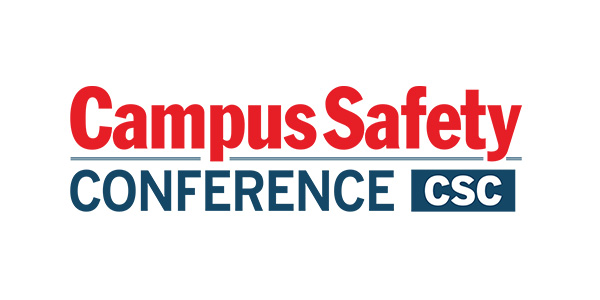For Freeman Health System, expansion was just what the doctor ordered. After all, this 392-bed, not-for-profit, three-hospital system provides comprehensive healthcare and behavioral health services to an area that includes more than 450,000 residents from Missouri, Arkansas, Oklahoma and Kansas. With 398,219 outpatient visits, 21,717 admissions, and 110,298 Emergency Department/Trauma/Urgent Care visits, it’s evident that Freeman would need to substantially enlarge its physical facilities to accommodate these impressive numbers, which increase by the day.
To that end, about four years ago plans were developed for a major expansion of Freeman West, the largest of the three Freeman campuses located in Joplin, Mo. The result was the creation of a six-story tower attached to Freeman’s two-story flagship hospital. The tower houses an impressive range of resources, including the hospital’s emergency room, information technology (IT) department, conference rooms, and post-surgery recovery rooms. Two patient floors (with two more in the works) have allowed Freeman to effectively double its bed capacity.
The building is also an oasis of modern medical care: the hospital has installed a cutting-edge shock/trauma bay and is, in fact, one of only two facilities in the world that offers it. Opened in October 2007, this new building has put the Freeman West Campus into a place that, from both a technological and patient-care perspective, most healthcare facilities can only dream about.
Of course, along with the new building expansion came the need to extend Freeman’s fire protection system. The prognosis in this area was not as favorable. The main hospital already had three fire protection systems from three different manufacturers; the third had been installed to accommodate a previous, smaller expansion project. The problem was that none of the systems were capable of handling the additional points needed for the proposed tower.
The inability to accommodate the expansion was only a part of the problem. The use of three different fire protection systems created confusion whenever there was a fire event or emergency situation, requiring personnel to check several different panels in multiple locations to determine the cause. This wasn’t just inefficient; in the event of a real emergency, it could mean the loss of precious seconds and minutes.
Neil Spencer, life safety systems manager for Joplin Fire Protection, understood Freeman’s dilemma. His firm, which was founded in 1951 as a fire extinguisher company and has since grown into a full-service life safety company, first connected with Freeman Health System about six years ago. Freeman called Joplin and asked them to perform fire alarm inspections on their existing fire protection systems. In doing so, Freeman was able to offer recommendations on how to best utilize the systems and soon went from being just another vendor to a trusted advisor.
Joplin began to take on additional responsibilities on behalf of Freeman and, based on the company’s performance, Joplin eventually became the exclusive partner for all of Freeman’s life-safety needs. Consequently, Freeman did not hesitate to turn to Joplin when a fire-protection plan for the new building had to be developed. Spencer recognized immediately that none of the existing systems would fit the bill.
“Although the last system we installed performed fine, we knew it was not capable of taking Freeman into its next phase of growth,” said Spencer, who oversees sales, service and installation of all fire alarm and life safety systems for Joplin. “And we didn’t want to add yet another system that wouldn’t be capable of expanding in the future.”
Working with Daniel Caylor, Freeman’s director of facilities management, Spencer recommended the Farenhyt IFP-1000 from the Silent Knight, part of the Honeywell Life Safety Group and a leading provider of industry-wide compatible fire alarm solutions for small and mid-size institutions as well as commercial sites.
The Farenhyt IFP-1000 is an intelligent analog/addressable fire alarm control panel (FACP). It is perfectly suited for mid-to large-sized jobs such as those found at schools and universities, hotels and, fittingly, hospitals. The system offers built-in capacity for 198 addressable devices with expansion to 1584 addressable devices using the IDP protocol. Features like individual point identification, drift compensation, and maintenance alert help the system reduce the number of frustrating and costly false alarms and service calls. The IFP-1000 also supports a full range of detectors, modules and power supplies.
Expanders provide the ability to accommodate a growing facility while avoiding the hassle and expense of installing a new system. This ensures that any plans for further expansion by Freeman can be appropriately met. The flexibility of the IFP-1000 is also evidenced by the fact that central station reporting can be performed either by point or by zone.
The non-proprietary nature of the technology utilized allows Freeman to work with a variety of parts and contractors – another example of the system’s flexibility.
The IFP-1000 was clearly the right approach for the new tower, and work soon began on the installation. Shortly thereafter, the Freeman Health System team had an idea.
“When we were planning the expansion, we got to talking with Mr. Caylor,” said Spencer. “We had already purchased the panel, already gotten part of it live, and then Mr. Caylor posed a question for us: why don’t we also upgrade the main hospital to this system? It made so much sense: Freeman was tired of having so many panels anyway. They wanted us to give them something to cover everything under one umbrella.
“We knew that they would upgrade the main hospital eventually,” he added. “I guess we didn’t expect it would happen this quickly. The project became a kind of ‘unintentional retrofit’.”
Joplin began by removing the three existing fire protection systems, then upgrading the main hospital before any work started on the tower. The timing was impeccable: when the construction schedule on the tower called for the system installation, Joplin was just finished with the main facility. Work on the tower began seamlessly, with the panel situated in the new tower’s basement electrical room.
Along with the IFP-1000, Joplin upgraded all of the hospital’s ancillary devices to addressable modules and ensured that each performed up to all state and local codes. Currently, all common areas are equipped with smoke detection; in the pediatric wing, smoke detectors are located in every room. Heat detectors are located at regular intervals throughout the facility. In place of the old horn strobes, Joplin added softer chime strobes, giving Freeman a way to alert hospital personnel and patients to an event while minimizing the fear that sometimes ensues when the alarms activate.
The system is programmed to perform a number of functions in case of a fire emergency, including shutting down air handling units, closing smoke and fire dampers, electronically locking fire doors, and recalling all elevators. The hospital’s sprinkler system is also connected to the IFP-1000.
Because the system automatically tests the connected addressable devices, Freeman personnel no longer have to canvass the facility with a smoke detector sensitivity tester every two years to test them; this capability is built directly into the panel.
According to Spencer, there are still minor adjustments to be made. But the hospital and the tower are open for business, a somewhat miraculous feat considering the finishing date of the work and the opening date of the facility were one in the same. More importantly, Freeman has a single system that has significantly streamlined the hospital’s fire-protection approach.
“Before, with the three separate systems, the hospital personnel were jumping back and forth trying to find out where a problem had originated,” Spencer said. “Now they can go to their remote annunciators anywhere in the hospital and find out what’s going on almost
instantly. Since Freeman personnel respond to their own fires, this is critical. With some patients on life support, others non-ambulatory, and still others that can’t be moved for one reason or another, evacuating people is often not an option. So the more quickly they can respond, the better.
“It will also be extremely easy to add additional devices to this system or accommodate future expansion,” he added. “And when the new floors in the tower are ready to be opened, we’ve left more than enough points to cover them. From a fire protection perspective, Freeman is ready for at least the next 10 years.”
Thankfully, no actual fire events have put the system to the test. According to Spencer, someone did set off an alarm by burning popcorn. But at least they knew right away where the situation had occurred – and the fact that it was not a real emergency.
In the end, Joplin was able to take an inefficient, multi-system approach to fire protection and mold it into an easy-to-use, single-location system for the new millennium. Now that’s a prescription for a very safe and healthy hospital.
Silent Knight December 2008 press release.






